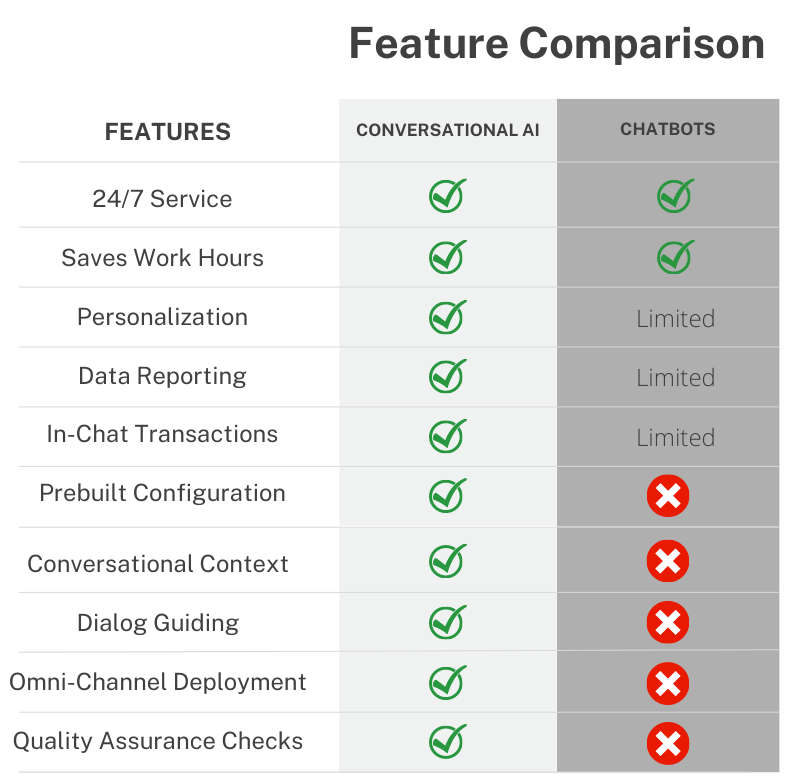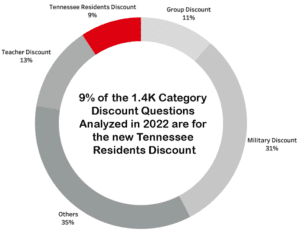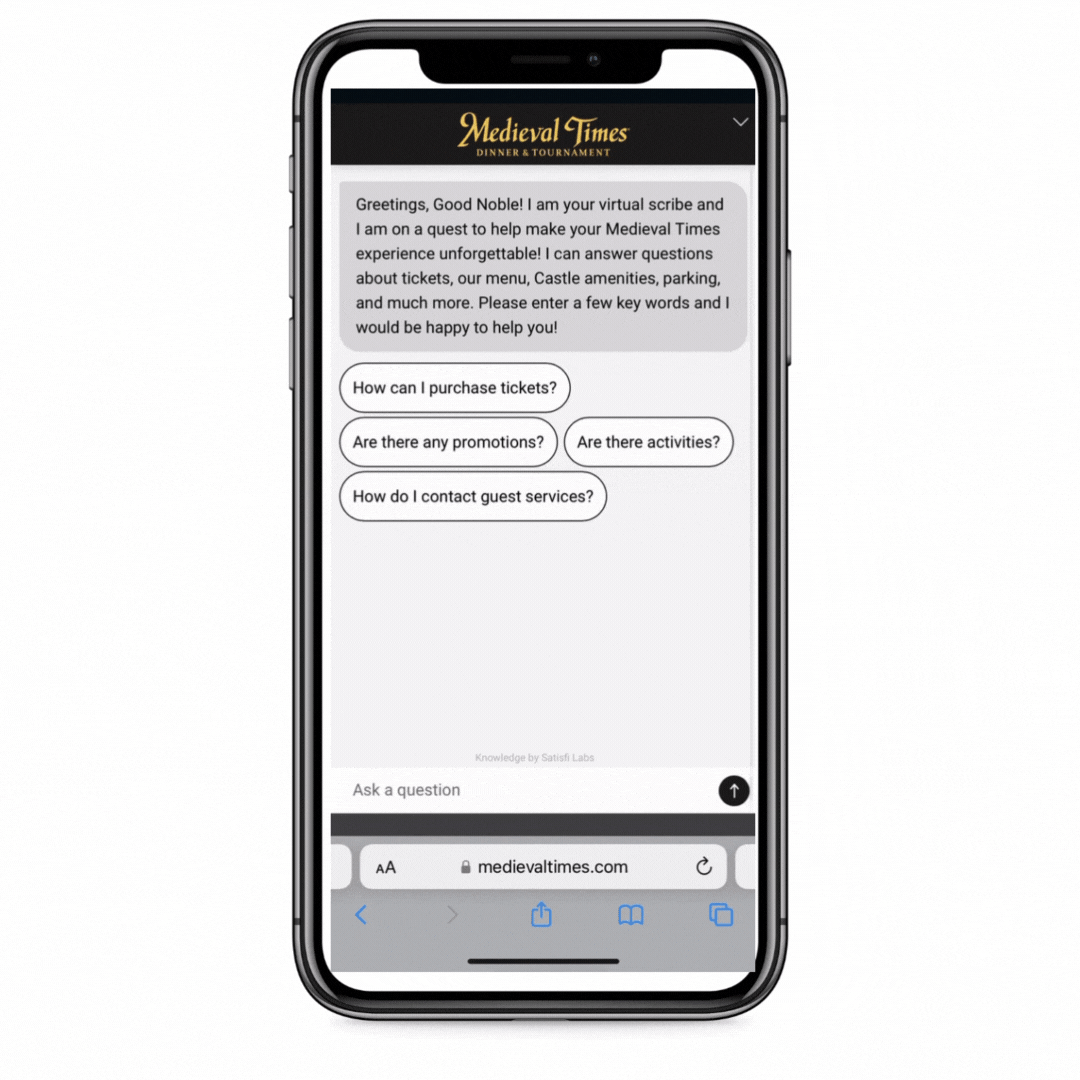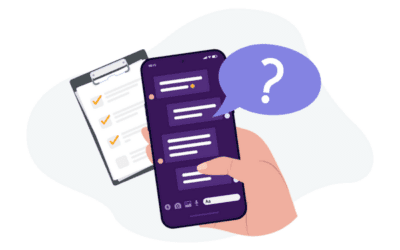Chatbots have long been used by customer service teams to quickly answer questions that are repetitive and can take valuable time away from completing other priorities. Chatbots have evolved a lot since Joseph Weizenbaum debuted the first chatbot, ELIZA, in 1964. However, they often need help handling diverse and ever-changing user requests.
According to Statistica, digital customer interactions tripled from 20% in June 2017 to almost 60% in July 2020. In the post-pandemic world, there is a growing demand for digital interaction.While conventional chatbots can still cater to new customer expectations, such as 24/7 service, their intelligence and capabilities remain rudimentary.
Therefore, Satisfi Labs has invented a new form of digital customer service with its conversational AI platform. The platform creates domain-specific AI Assistants that interact with customers by answering their questions, performing transactions, and collecting unique data. Assistants are built with contextual understanding and shared intelligence and can be accessed through chat and voice entry points. Each assistant is an expert in their field, such as ticketing, parking, food and beverage, etc. Assistants work together to create the most well-rounded customer service experience. This article will highlight features that make the conversational AI platform anything but your typical chatbot

Prebuilt Knowledge Makes The Job Easy
Satisfi Labs has over 350 clients in the sports, tourism, and entertainment industries, so the AI Assistants have seen over 35 Million messages within these industries. Therefore, the Assistants have learned the many different types of questions that will be asked and have become adept at understanding human language. New clients can take advantage of this previously learned knowledge, drastically decreasing the work needed to be done to set up a new knowledge base.
Satisfi Labs uses a proprietary training method to enable broad and deep understanding for the AI Assistants. When you think about how you learned subjects in school, it was important to have a class structure where specific time was allotted for teaching a topic.
Machines need a lot of data to learn, but that data also has to be broken up into virtual classrooms so a comprehensive understanding can be learned. The failure of many conversational AI deployments is this concept of the FAQ as a training basis. Back to the education example, let’s say you learned how to multiply, how to read Romeo & Juliet, the story of the Civil War, and how electric cars work in the same class time. The commonality is that these are frequently talked about topics, so it’s important you know them. This method will give you a basic understanding of each topic, but it will not be enough to understand deeply and explain back broader information around Math, Literature, American History, or Science.
Our approach enables our Assistants to learn in a multi-layered training environment, so they understand how to mimic the ideal digital employee. There are topics or understandings that are relevant for all clients, like health & safety, which are part of the top layer. Other topics specific to a business or location, such as ticketing, require training one or two layers deeper.
The training “classes” are shareable across Assistants, so as new segments are created, we send them back to school (in milliseconds) to supplement their current training with updated learnings. This comprehensive approach means the FAQs are taken care of because they are rooted in one of the layers – but it also means that they are ready to answer the questions not even asked yet, and that is why employees are trained. Not to memorize Q&A, but to acquire knowledge and understanding that enables them to supply the right answer.
That is why our AI is hirable.
The knowledge possessed by the assistants is divided into four sections: Global Knowledge, Vertical Knowledge, Subvertical Knowledge, and Local Knowledge.

Global Knowledge refers to the questions that apply to all companies, no matter the industry. An example of this could be “Do you require face masks?” The assistants have learned the many different ways a user can ask this question, so any newly onboarded client will immediately be able to recognize and respond to it. In general, Global Knowledge requires the least amount of training to set up.
Vertical Knowledge is specific to an industry, such as sports, entertainment, or tourism. Categorizing each client by their vertical helps our platform decipher between phrases that can have different meanings among different verticals. For example, the keyword “cup” can reference a championship game in sports (‘Stanley Cup’ or ‘World Cup’), however, it can also refer to a drinking cup, especially in other verticals.
Subvertical Knowledge is even more specific, within each vertical. For example, the tourism vertical would include Museums, Aquariums, and Ski Resorts, among other subverticals. Similar to our Vertical Knowledge, this helps our platform better understand how the same phrase may have different meanings between different types of companies, within the same general industry. Within the Ski subvertical, “Lift” is a common word used to describe the mechanism for transporting skiers up the hill, however, our museum clients in the UK might recognize “Lift” to be an elevator.
Lastly, Local Knowledge is anything that is specific to the client. This knowledge represents the biggest challenge for new clients since there is not a preset protocol for answering these questions. The question “What time do the presidents race?” is something that would probably only apply to the Washington Nationals, when in the fourth inning of each game, mascots of George Washington, Abraham Lincoln, Thomas Jefferson, and Theodore Roosevelt race around the warning track.
As Satisfi Labs continues growing into new industries and sees more and more variations of questions, the knowledge base will continue to become smarter, and onboarding a new client will become increasingly seamless.
Understanding Conversational Context
Another feature that sets Satisfi Labs’ conversational AI platform apart from chatbots is our proprietary contextual NLP, which helps our AI convey the true meaning of a question by creating rules and relationships between words to best replicate the structure of the human language.
Typical chatbots can understand a keyword within a sentence, but can’t necessarily understand a sentence’s structure. This is similar to how children first learn to speak. They may know to say “dada” or “mama”, but they don’t yet know the rules of human language to truly articulate what they want.
By understanding the relationships between words, previous messages within the conversation, and natural human language patterns, we can better understand the true meaning of the question and handle requests that would normally “break” a chatbot, such as when there are multiple keywords in the same sentence. In the message “Will coaches wear facemasks?” there are three keywords: coaches, wear, and facemasks. “Coaches” or “Facemasks” alone would trigger a unique response, but together they form a new user intention.
To ensure conversational context, Satisfi Labs employs a quality assurance team that tests new knowledge bases and examines the assistants’ responses to previously asked questions. Every time a digital interaction provides a wrong or irrelevant response to a consumer, their trust is likely to dissolve. This is why Satisfi Labs has committed resources to improve the quality of answers for all clients.
Collect Data on Consumer Behavior
Satisfi Labs’ platform collects and reports data on consumer behavior, driving business decisions for our clients. Our clients see information about what questions are being asked, when questions are coming in, and what channel users are coming from, among other data on our Analytics Dashboard.

Many clients have used our data to improve their operations. For example, we recognized many questions about in-state discounts to Ripley’s Aquarium’s Assistant, although there was no such discount in place. After presenting this data to Ripley’s they quickly responded by introducing a brand new Tennessee Resident Ticket Discount, and immediately saw ~2,000 regarding the new intent.

Transactions Directly Within Chat
Satisfi Labs’ platform is not strictly conversational but also transactional. The platform has found great success in selling tickets through integrations with Ticketmaster, Telecharge, Tickets.com, and Ingresso. In fact, ticket purchasing questions remain our number one most requested intent among our sports clients. The process to purchase tickets within the chat is extremely seamless, as fans no longer have to sort through hundreds of available options. When fans request tickets for a particular game, our platform simply asks whether they would like seats based on the best location, price, or flexibility, and then finds the most relevant ticket available.
With Satisfi Labs’ recent partnership with Noble, a digital commerce and marketing platform for on-site experiences, consumers can now also order food and beverage items at various event locations, such as concert halls, festivals, stadiums, and theaters. As more consumers yearn for contactless payment and dread missing their favorite moments of action, demand for mobile ordering through conversation will continue to grow.
Guiding Dialogue
Traditionally, chatbots are designed as scripted one-way interactions, however, sometimes, more information is needed to best answer the question. Because our platform is designed as a two-way conversation with a memory of previous messages, it can ask users questions to serve them better.
Additionally, we can understand questions that are closely related to each other, so when guests have a question, we can respond with the answer and quick reply buttons to easily trigger associated questions. For instance, there is a button on Georgia Tech’s platform to find out more about gate times after answering a question about parking, as these topics are frequently asked together.
Branding for a Personalized Feel
According to Retail Dive, 61% of consumers said that they would like digital interaction with companies to be personalized. A lack of personalization is also why many people still prefer human interaction over digital interaction. We recognize this concern and work with our clients to give our platform an identity. You may know our Miracle Mile Shops virtual assistant as Jules. Aside from being informed and helpful, Jules is also known for her “sassy, witty, and trendy personality.” So next time you ask for a bite to eat, don’t be offended if Jules asks if you’re “getting hangry.”

Another one of our clients that does a great job of branding is Medieval Times. They have altered their assistants to talk like one of their Knights, Queens, or Squires. Many companies will try to get their agents to speak in theme consistently, but it can take a lot of work to get humans to oblige, especially as the midday fatigue kicks in. Fortunately, our assistants will not roll their eyes when asked to perform in character all day. Huzzah!

Deployment Across Web, Messaging Apps, and Voice Channels
Satisfi Labs’ Conversational AI Platform can be deployed across web, messaging apps, and voice channels, each with the same standard of efficiency and accuracy. Typically, chatbots may only exist on one channel, which can be very inconvenient for consumers. We have found that consumers prefer using the web while they are home and asking pre-purchase questions. Then once they are on-site, they are more likely to use messaging app channels. Not having a presence on multiple channels can cause companies to miss out on key consumer journey stages.
What makes our ‘omni-channel’ platform different from other multi-channel platforms is the ability to track the same user across different channels. This improves our analytics reporting by better understanding how the same consumers interact with channels differently and how responses on those channels should be customized.




